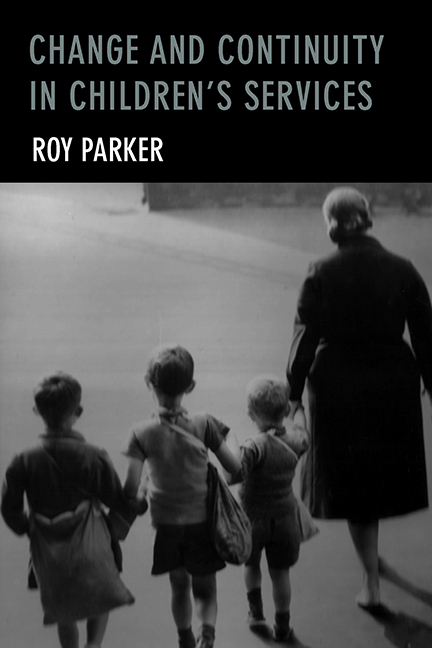Book contents
- Frontmatter
- Dedication
- Cover illustration
- Contents
- Acknowledgements
- Preface
- 1 Introduction: patterns of change and continuity
- 2 Residential child care: an historical perspective
- 3 From boarding-out to foster care
- 4 The evolution of landmark legislation
- 5 Getting started with the Children Act 1948: what do we learn?
- 6 Child care in the melting pot in the 1980s
- 7 Trends, transitions and tensions: children’s services since 101 the 1980s
- 8 Reflections on the assessment of outcomes in child care
- 9 The role and function of inquiries
- 10 Evidence, judgement, values and engagement
- 11 Emerging issues: looking ahead
- Notes and references
- Bibliography
- Index
5 - Getting started with the Children Act 1948: what do we learn?
Published online by Cambridge University Press: 07 March 2022
- Frontmatter
- Dedication
- Cover illustration
- Contents
- Acknowledgements
- Preface
- 1 Introduction: patterns of change and continuity
- 2 Residential child care: an historical perspective
- 3 From boarding-out to foster care
- 4 The evolution of landmark legislation
- 5 Getting started with the Children Act 1948: what do we learn?
- 6 Child care in the melting pot in the 1980s
- 7 Trends, transitions and tensions: children’s services since 101 the 1980s
- 8 Reflections on the assessment of outcomes in child care
- 9 The role and function of inquiries
- 10 Evidence, judgement, values and engagement
- 11 Emerging issues: looking ahead
- Notes and references
- Bibliography
- Index
Summary
Having read Judith Niechcial's biography of Lucy Faithfull I became curious about others of her generation who also entered the reconstructed children's services at a senior level in the wake of the Children Act 1948. The new children's officers whom the local authorities were obliged to appoint, together with their committees, were expected to implement the substantial reforms that the Act required. How did they get started and what difficulties did they have to confront? What qualities did they require and how successful were they? Are there still conclusions to be drawn about such reforms that are useful in today's world of regular administrative upheavals?
Of course, Lucy Faithfull (later Baroness Faithfull) was not one of these initial appointees but she was, at the time, one of the Home Office inspectors who, with their colleagues, endeavoured to oversee and guide what was happening at the local level. However, she did move to become the children's officer for Oxford city in 1958. In tracing her career Niechcial has provided us with a window onto the broad sweep of events that unfolded in the children's service after 1948 and, indeed, up to Lucy's death in 1996.
I A starting point
The Children Act 1948 established separate children's committees in all county councils and county borough councils in Great Britain. These were to be responsible for a more integrated service for children in need of care and for a service that was to raise the standard of the care that was provided. Children's officers were to be appointed to see these reforms realised and were to have no other responsibilities. We shall come to the question of how standards were to be raised later, but first it is important to appreciate the scale of the integration that was put in train because it was this that presented the children's officers with their initial practical and political challenges.
Before 1948 the public care of children deprived of a normal home life was divided locally between the public assistance committees, education and public health departments. The first of these was responsible for administering the poor law, one part of which concerned the ‘relief’ of children through their admission to care on a voluntary basis, although it was possible, in certain circumstances, for the local authority to assume the rights and duties of parents.
Information
- Type
- Chapter
- Information
- Change and Continuity in Children's Services , pp. 69 - 84Publisher: Bristol University PressPrint publication year: 2015
